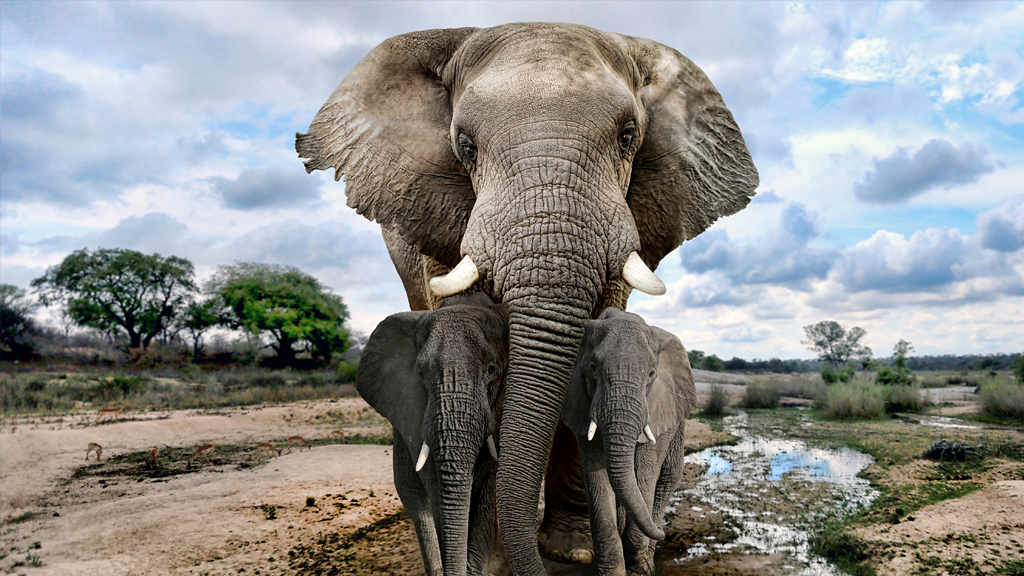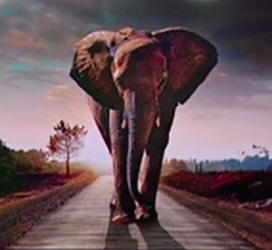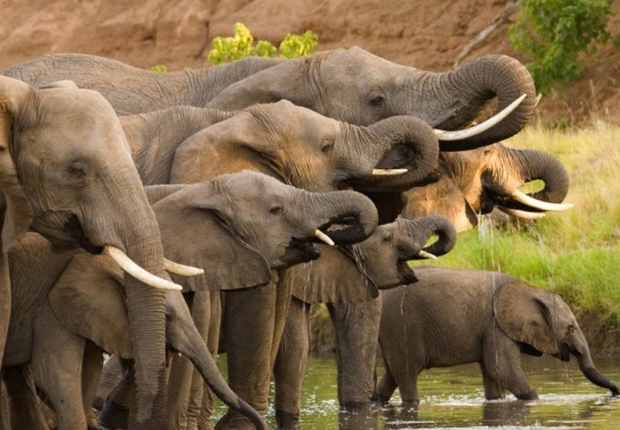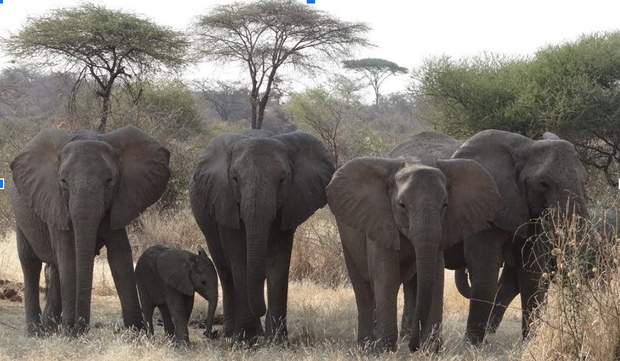High School | Daily Do
Why is the African Elephant Population Changing?

Biology Crosscutting Concepts Disciplinary Core Ideas Is Lesson Plan Life Science NGSS Phenomena Science and Engineering Practices Three-Dimensional Learning High School Grades 9-12
Welcome to NSTA's Daily Do
Teachers and families across the country are facing a new reality of providing opportunities for students to do science through distance and home learning. The Daily Do is one of the ways NSTA is supporting teachers and families with this endeavor. Each weekday, NSTA will share a sensemaking task teachers and families can use to engage their students in authentic, relevant science learning. We encourage families to make time for family science learning (science is a social process!) and are dedicated to helping students and their families find balance between learning science and the day-to-day responsibilities they have to stay healthy and safe.
Interested in learning about other ways NSTA is supporting teachers and families? Visit the NSTA homepage.
What is sensemaking?
Sensemaking is actively trying to figure out how the world works (science) or how to design solutions to problems (engineering). Students do science and engineering through the science and engineering practices. Engaging in these practices necessitates students be part of a learning community to be able to share ideas, evaluate competing ideas, give and receive critique, and reach consensus. Whether this community of learners is made up of classmates or family members, students and adults build and refine science and engineering knowledge together.
Introduction
Today's task, Why is the African elephant population changing?, creates an opportunity for students to look at examples of how humans have become the selective pressure causing the rise of tusklessness in the African elephant population. Students engage in science and engineering practices to figure out why there has been a rise in tuskless elephants over the years .
This task has been designed to be used by students, families, and teachers in distance and home learning. While students could complete this task independently, we encourage students to work virtually with peers or in the home with family members.
Before you begin the task, you may want to access the accompanying Why is the African elephant population changing? slides.

Presentation of Phenomena (What am I exploring today?)
The poaching of elephant tusks for ivory is a topic that is often brought up in high school biology class when learning about ecosystems. Often it is used as a topic to discuss how ethics play a role in biodiversity. Many, if not all, students are familiar with elephants in some way and poaching is usually a hot topic that students want to discuss. However, not many students understand how poaching is the vehicle for a genetic shift in the African elephant population. For today's Daily Do, we use the pictures below to prompt students to think about the changes we are seeing in African elephants.
Many traditional class discussions focus on the reasons people poach. Today, we look at poaching with new perspective - how it is driving genetic change. Although there are several animals that are poached throughout the world, today, students will dig into figuring out why the African elephant population is changing. What is going on with the elephants? Let's investigate!
Guidance: The goal is to get students thinking about why more and more elephants are being born without tusks. Presenting a phenomenon and asking students to generate questions about it creates a need to figure out the answer to those questions. This is authentic engagement and a powerful learning process (unlike "learning about" poaching and discussing it as an example of bioethics).
Presenting the Phenomenon:
Have students observe the pictures on slide 2 and write down what they notice and wonder about the photos. This is a critical step in eliciting further questions about what is going on with the tusks. Our goal here is to promote student thinking about questions they have related to this topic and to surface prior knowledge and misconceptions. ALL student questions are okay at this point. Our goal is to motivate curiosity and not distinguish between "good questions" and "bad questions" or "right questions" and "wrong questions". Common questions will arise for most students, which is what this task builds upon.


Investigative Questions (What questions do I have about what I just saw?)
Investigative questions are common questions kids may ask after they are introduced to the phenomena. Although questions may vary, many students are curious about what causes some African elephants to be tuskless.
Guidance: It is important to allow time for thinking. Many students have ideas and questions but need time to formulate their idea or question into words. Some students may also benefit from writing things down first before they share. As adults, we may be tempted to give them questions we feel might be important to explore, however, we need to refrain from this and allow our students to practice asking their own questions. Our goal here is for students to consider what they are seeing in the photos and to come up with questions.
Common Questions: (slide 3)
- What are tusks used for?
- Why don't the elephants have tusks?
- Were they born without tusks?
- How can elephants be born without tusks?
- Were the tusks poached?
- Have the tusks just not grown in yet?
- Are they too young to have tusks?
- What are tusks?
- Why would people want elephant tusks?
We want to focus on one question in particular at this point: (slide 4)
- What are tusks used for?
- Why don't the elephants have tusks?
- Were they born without tusks?
- How can elephants be born without tusks?
- Were the tusks poached?
- Have the tusks just not grown in yet?
- Are they too young to have tusks?
- What are tusks?
- Why would people want elephant tusks?
Connection Guidance: Students may make connections to the idea of poaching without really knowing what it is. Student questions may also surface preconceptions/incomplete understandings. Some common ideas that tend to surface are: elephants can choose to be tuskless and that elephants are tuskless because poachers took their tusks. At this point, it is OK to allow these ideas to remain as students will figure out more about how and why these African elephants are tuskless as they work through the lesson.
Ultimately, we want to figure out why African elephants don't have tusks. Before we can figure out why more African elephants are tuskless, we need to know what tusks are.
Gathering Information Investigation
We decided we need to know more about elephants, more specifically, African elephants and their tusks (slide 5). Have students read the short article (below) and document important information and any new questions.
Elephant Tusks - Ivory Tusks, a Blessing and a Curse
Engage students in a discussion to answer some of the questions they have about African elephants and their tusks. Students should now be able to answer (slide 6):
- What are tusks used for?
- Why don't the elephants have tusks?
- Were they born without tusks?
- How can elephants be born without tusks?
- Were they tusks poached?
- Have the tusks just not grown in yet?
- Are they too young to have tusks?
- What are tusks?
- Why would people want elephant tusks?
Next, place students in small groups and ask them to use this new information to brainstorm ideas about why more African elephants are now tuskless. Have students share their brainstorming ideas and document their ideas on the board. Their ideas may include (slide 7):
- poachers are taking the tusks
- more elephants are born without tusks
- elephants stopped growing tusks
Last, have students think about this quote from the article they read, "However, the average size of tusks has decreased over the past hundred years because hunting elephants for their ivory has resulted in the ‘big tusk gene’ becoming increasingly rare."
Ask students what they think is going on with the elephants? Guide students to the idea that more African elephants are being born without tusks. Use talk moves to prompt students to think about patterns of inheritance:
- After reading the quote, what do you think causes elephants to have tusks?
- How do African elephants get their tusks?
Guidance: It is not necessary (during this activity) for students to figure out the intricacies of the inheritance. The focus right now is using the pattern of inheritance, to figuring out that tusks are inherited and something is causing more tusklessness.
Building Consensus
It is valuable for learners to stop periodically and gain consensus about what they currently understand to be true. Teachers do this often in the classroom, periodically pausing instruction to be sure students have achieved the learning milestones necessary in order to move forward.
Let's look back at what we've figured out up to this point.
Based on the article, students will have gained the following information about tusks:
- Both male and female African elephants have tusks
- Tusks are actually elongated teeth (incisors)
- Tusks are used for many different things including getting food, water, and protection.
- Male elephants use their tusks to get a mate.
- Tusks are poached for ivory.
Engage students in a consensus-building discussion and guide them to conclude that growing tusks is genetic. Students should base this conclusion on information from the article as well as from any prior knowledge they have on genetics and inheritance from earlier grades.
Now that students have figured out that tusks or tusklessness is a genetic trait that is passed from parent to offspring, they need to figure out what is causing this shift. We are not sure if elephants can just stop growing tusks or if poaching has caused something to change.
Additional Investigative Research to Develop Explanations
Engage students in additional research by providing them with some data (Slide 10). Have students work in small groups to look for patterns in the data. Ask them to record what they notice and then share their noticings with the class. By looking at the patterns in the data we figure out (slide 11):
- Elephants are killed for both meat and ivory
- Tusked elephants are killed the most
- Very few tuskless elephants are poached.
Next, ask students if they think this information helps them explain why there are more tuskless elephants showing up in the African elephant population. Have them work in groups to create an explanation for how and why there are more tuskless elephants now than in previous years.
Teacher Guidance: Allow students time to really look at data and discuss to figure out that tuskless elephants are not poached that often. Allow them to draw conclusions from the data to figure out that when elephants are poached they do not survive. Since tuskless elephants are not poached they are more likely to reproduce and pass on there gene for tusklessness.
What did we figure out?
To answer our phenomenon question, Why is the African elephant population changing?, have students share their explanations using a gallery walk.
After the gallery walk, engage in a class discussion to address any questions students may still have and to reiterate what we figured out about tuskless elephants (slide 12):
We figured out that poaching by humans is causing a shift in the elephant population. Many elephants are poached for their ivory tusks, leaving tuskless elephants alive and able to reproduce. Since tuskless elephants are able to pass on their genes their offsprings have a better chance of being tuskless.
Connection Guidance: There are many different reasons for elephant poaching. Consider facilitating an additional discussion about how much of the poaching in this area was previously fueled by war and the want of ivory. Now that the war is over, ivory poaching continues due to the continued demand for ivory.
Extension Activity
With the development of DNA analysis technologies, it is now possible to track where poached ivory came from. The CS Wildlife activity (linked below) allows students to work independently to track poached ivory. Students will engage in analyzing DNA data using gel electrophoresis to figure out where the tusks came from (slide 13).
NSTA Collection of Resources for Today's Daily Do
NSTA has created a Why is the African elephant population changing? collection of resources to support teachers and families using this task. If you're an NSTA member, you can add this collection to your library by clicking ADD TO MY LIBRARY located near the top of the page (at right in the blue box).
Check Out Previous Daily Dos from NSTA
The NSTA Daily Do is an open educational resource (OER) and can be used by educators and families providing students distance and home science learning. Access the entire collection of NSTA Daily Dos.
Acknowledgments
This Daily Do is inspired by and uses materials from the The Africa storyline developed by the ISTA supported NGSS Biology Storyline Working Group. This lesson uses HHMI Biointeractive materials that have been modified for this activity. These are open-source resources that can be used by parents and teachers to implement student-driven learning and can be found on the Illinois Science Teaching Association website.


